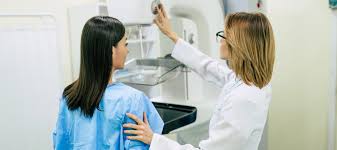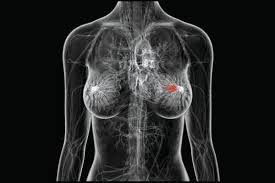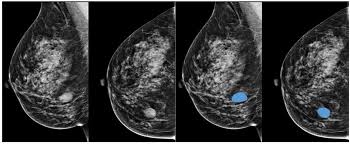Breast cancer is one of the most common types of cancer among women, and mammography plays a fundamental role in the prevention and early detection of this disease. Through regular exams and advances in technology, it is possible to identify lesions at an early stage, significantly increasing the chances of successful treatment. In this article, we will explore the importance of mammography, the main prevention methods, and answer frequently asked questions about this topic.

What is Mammography?
Mammography is an imaging test that uses X-rays to capture detailed images of the breast tissue. This exam is crucial for detecting changes, such as lumps or microcalcifications, which may indicate cancer or other abnormal conditions. Mammography is widely regarded as the most effective method for the early detection of breast cancer.
How Does Mammography Work?
During a mammogram, the breast is compressed between two plates to obtain a clearer and more detailed image of the internal tissues. This compression is essential to enhance image quality and reduce the radiation dose required. Although it may cause some discomfort, this quick procedure is necessary to ensure detailed and accurate analysis.
The Importance of Mammography in Breast Cancer Prevention
Preventing breast cancer starts with early detection, and mammography plays an essential role in this process. Numerous studies have shown that regular mammograms can reduce mortality related to breast cancer, especially among women over the age of 40.
Who Should Have a Mammogram and How Often?
- Women Over 40: It is recommended that women aged 40 and over undergo annual mammograms. This helps to monitor changes in breast tissue over time.
- Family History: For women with a family history of breast cancer or genetic mutations (such as BRCA1 and BRCA2), doctors may recommend more frequent screenings or beginning at a younger age.
Benefits of Regular Mammography
- Early Detection: Detecting breast cancer in its early stages significantly increases the chances of effective treatment.
- Less Invasive Treatment: With early detection, treatments tend to be less invasive and have fewer side effects.
- Increased Survival Rates: Studies show that women who undergo regular mammograms have significantly higher survival rates.
Is Mammography Safe?
Yes, mammography is a safe procedure, and the benefits of early detection far outweigh the risks associated with radiation exposure. Modern technology uses minimal doses of radiation, which significantly reduces the risk to the patient. Additionally, most health professionals recommend that the exam be performed annually, presenting no significant cumulative risk.
Digital vs. Conventional Mammography
Today, there are two main types of mammography:
- Conventional Mammography: Uses film to capture images, which can be less precise in certain cases, especially in dense breasts.
- Digital Mammography: Stores images on a computer, allowing for a more detailed analysis and easier image processing.
3D Mammography (Tomosynthesis)
Tomosynthesis is a more recent technology, often referred to as “3D mammography.” It provides more detailed images by creating a “reconstruction” of the breast in layers. This is especially useful for women with dense breasts, as it allows for the identification of lesions that might go unnoticed in a traditional mammogram.

Breast Cancer Prevention
Breast Cancer Prevention Strategies
While mammography is essential for early detection, there are several measures that women can take to reduce their risk of developing breast cancer.
Maintaining a Healthy Lifestyle
- Balanced Diet: A healthy diet can help prevent many types of cancer, including breast cancer. Diets rich in fruits, vegetables, whole grains, and low in fat have shown health benefits.
- Physical Activity: Studies show that women who exercise regularly are at lower risk of developing breast cancer. It is recommended to engage in at least 150 minutes of moderate exercise per week.
- Limiting Alcohol: Alcohol consumption is directly linked to an increased risk of breast cancer. Reducing or avoiding alcohol can make a significant difference.

Monitoring Changes in Your Breasts
Regular breast self-exams can help detect changes. While self-exams do not replace mammography, they can alert you to changes, such as lumps or unusual discharge, that should be evaluated by a doctor.
Regular Check-Ups with a Gynecologist
Regular visits to a gynecologist provide continuous monitoring, which is essential for prevention. This professional can advise on the ideal time to start exams and the appropriate frequency.
Frequently Asked Questions about Mammography and Breast Cancer
Does mammography hurt?
Mammography can cause some discomfort due to the necessary compression of the breasts, but most women find the pain tolerable and the exam is quick. This slight discomfort is worth it, considering the benefits of early detection.
Is mammography radiation dangerous?
No. The amount of radiation used in a mammogram is very low and is considered safe. The benefits of early detection far outweigh the risks associated with minimal radiation exposure.
What is the ideal age to start having mammograms?
Most experts recommend starting at age 40, but women with a family history may need to start earlier as directed by a doctor.

Does mammography detect all types of breast cancer?
Mammography is very effective, but it is not infallible. In some cases, other exams, such as breast ultrasound or magnetic resonance imaging (MRI), may be recommended to complement the diagnosis.
Do I still need a mammogram if I do regular self-exams?
Yes. Self-exams are useful for detecting visible or palpable changes but do not replace mammography, which can identify internal lesions that cannot be felt.
Conclusion: Mammography Saves Lives – Don’t Put Off What You Can Do Today
Mammography is an essential exam for the prevention and early detection of breast cancer, especially for women over the age of 40. Regular mammograms greatly increase the chances of treating the disease at early stages, with higher success rates.
In addition to mammography, adopting a healthy lifestyle, performing self-exams, and regularly consulting a gynecologist are important steps to reduce the risk of developing breast cancer. Stay vigilant, take care of your health, and remember: prevention is the best way to fight breast cancer.
Meta Description (SEO): “Discover how mammography can help in breast cancer prevention. Learn when to have it, how it works, and why it’s essential. Take care of your health!”
If you need more information or help scheduling your mammogram, consult a healthcare professional. Remember: prevention is the best treatment.
Mammography and Breast Cancer Prevention: Take Care of Your Health – Take Care of Your Body, You Live in It, https://www.mayoclinic.org/diseases-conditions/breast-cancer/symptoms-causes/syc-20352470




Pingback: The Role of Artificial Intelligence in Breast Cancer Diagnosis - VarietyWeb